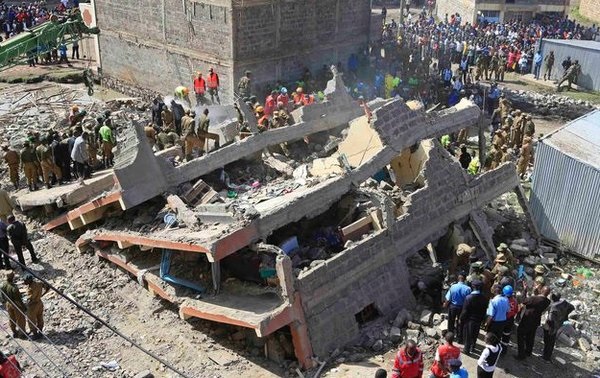On 12th January 2015, there were media reports to the effect that the building that collapsed at Huruma was designed by an Architect by the name Patrick Githinji. The reports went on to claim that Mr. Githinji is an architect.
We wish to state that Mr. Githinji is NOT an architect. A glimpse at the Register of Architects and Quantity Surveyors held by Board of Registration of Architects and Quantity Surveyors (BORAQS) Kenya reveal that there is no architect by that name.
BORAQS is established by the Architects and Quantity Surveyors Act, Cap 525 of the laws of Kenya to inter alia train, register and regulate the professionals and the profession of Architecture and Quantity Surveyors in Kenya. The Board does not enforce and supervise the construction of building; this is done at the City, Urban and County levels.
For example, Nairobi City County government has a statutory power to regulate and manage all building developments within its jurisdiction pursuant to part II of the 4th schedule, County Government Act 2012, Urban Areas and Cities Act 2011, Physical Planning Act Cap 286 and other related statutes.
Over the last two decades Kenya has witnessed unprecedented urban growth which has severely strained the ability of urban area administrations to provide adequate professional services to match housing and related infrastructure demands. The enforcement of building laws and regulations has been hampered by acute lack of technical and supervisory staff. The inadequacy in middle level supervisory staff is caused by lack of tertiary institutions which train diploma and inspectorate cadres. Most of these institutions were converted into universities. However, we are aware of the government efforts to increase tertiary training institutions through the Tivet programme the effect of this will take long before it is felt.
As a result, there is serious lack of proper trained artisans and inspectors e.g. plumbers, masons, electricians, carpenters, etc. This is further compounded by lack of progressive recruitments in both the national and county governments.
Incidentally, it is these poorly trained artisans that are carrying out construction of most buildings in the country leading to collapsing of buildings at different stages of construction and some have also collapsed long after they have been occupied. The most recent incidents were the Makongeni and Huruma houses both located within the Nairobi City County.
However, there are myriad of challenges that the construction industry in the country face. These include but not limited to weak laws, low penalties, lack of capacity in terms of staff and equipment for surveillance and enforcement, corruption among law enforcers, cartels and landlords who inhibit supervision and enforcement of law by government agents. As way forward, BORAQS recommends that the stakeholders in the construction industry and others not to engage anybody who is not registered by the Regulatory Institutes e.g. BORAQS, EBK and Planners Board, among others.
We wish to inform the stakeholders that information pertaining to registration is available on BORAQS website, www.boraqs.go.ke. We also wish to advise that before engaging the professionals in the construction industry please ensure that they have produced a current practicing certificate.
As the construction industry regulator, BORAQS is committed to instilling professionalism in the built environment.



